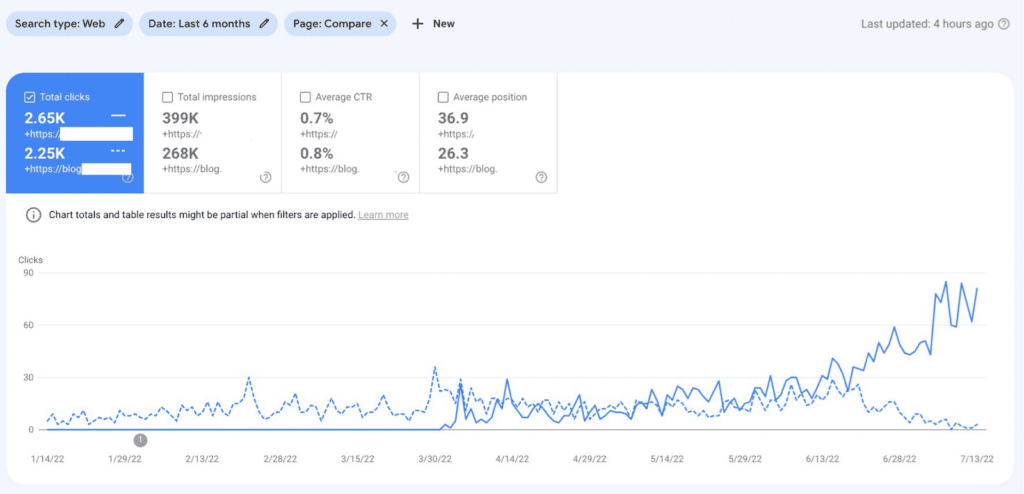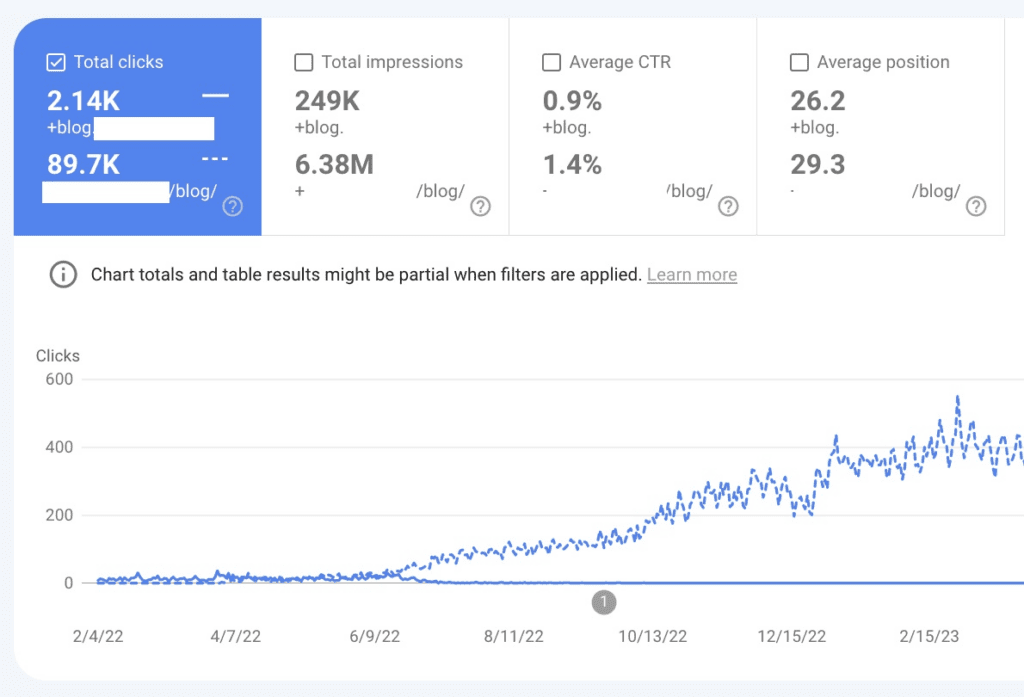Most opinions on the subdomain vs. subdirectory for SEO debate take the “It depends” stand.
That’s not the most exciting answer, but it makes the most sense.
Every business is unique. How a website is structured, whether based on subdomains or subdirectories, depends on the business and its intended audience.
Here’s the caveat—If you want the most value from your SEO efforts, subdirectories are king. We’re here to expand on that idea and attempt to take a firm stand. But first, we need to learn:
- Subdomain Vs. Subdirectory
- How subdirectories and subdomains affect SEO
- When to use subdomains and subdirectories
- Why subdirectories are (for most scenarios ) better for SEO
Subdomain vs Subdirectory
Both subdomains and subdirectories have their pros and cons. At the end of the day, how one or the other is used becomes a business decision. To help you decide, here’s a look at both:
What is a Subdomain?
A subdomain acts as an extension of your main website. You can easily spot a subdomain as it is always in front of your main domain.
Subdomains act as different entities from your main domain. But Google Search Central says Google is smart enough to know that your subdomains and main domains are related.
The issue is several case studies prove otherwise. We’ll get into that later.
First, let’s look at an example of a subdomain from Semrush. “Semrush.com” is the main domain. Meanwhile, “careers.semrush.com” is a subdomain specifically for hiring new talent.
What is a Subdirectory?
A subdirectory lives within your main domain and comes after the main domain. You’re probably familiar with subdomains like domain/blog or domain/contact.
Think of a tree. That entire tree is your domain. All the branches it has can be subdomains. The only difference is that subdirectories can branch out infinitely. Trees can’t.
But just because you can have infinite subdirectories doesn’t mean you should. It has to be based on your business model, the type of content you need, and your audience.
Take Salesforce as an example. Unlike Semrush, it uses subdirectories for its careers page.

As mentioned earlier, using subdomains vs. subdirectories is a business decision. In this case, Salesforce decided a subdirectory for their careers page was better for their business.
That might not be the case for your specific business, especially if you want the best results from SEO efforts. So, how do both affect your SEO?
How Subdomains and Subdirectories Affect SEO
Before getting into the nitty gritty, let’s step back and look at things from a macro perspective. Businesses generally invest in SEO to attract customers by ranking higher on search results.
The best way to do this is through high-quality content published at scale.
Here’s where the debate starts. Where should you put your content? You have two options: First, use subdirectories. Most would use the subdirectory “blog.”
Option two is using a subdomain. Instead of “domain/blog,” you get “blog.domain.”
Which is better? Let’s dive in!
Subdirectory Pros
In most cases, subdirectories provide the most benefits for your SEO efforts. When using subdirectories, expect the following advantages:
Shared Link Equity
Let’s say you have a high-traffic article in the “blog” subdirectory. Since that subdirectory is under your main domain, the main domain also gets SEO benefits like link equity earned from backlinks to blog content.
Better Site Architecture
Using subdirectories also provides a better site architecture and content context, making it easier for Google’s web crawlers to index your site.
Site-Wide SEO Applications
Subdirectories make it easier for site owners to apply domain-wide SEO best practices. Subdomains are treated as entirely different sites.
You’d need to reapply those best practices (in most cases, a different SEO strategy) for a subdomain altogether.
Convenient Navigation and Better User Experience
Consider how many clicks users need before getting to the content they need. Users would be redirected to another site if that content is on a subdomain.
Think about the user experience and their convenience. Subdirectories provide better sitelinks from Google. If you look up Spacebar Collective, you’ll get this result.

These sitelinks help your audience get to what they need most from your business. Again, reducing the number of clicks it takes to go from point A to B.
Subdirectory Cons
Creating subdirectories can be tricky if you haven’t strategized on site architecture beforehand. This can lead to the disorganization of subdirectories and disadvantages such as:
Confusing Content Categorization
For example, users might struggle to find the blog they want to read if they have volumes of content about various topics.
But this can easily be solved by creating subdirectories within subdirectories. Let’s say you have a lifestyle-centered website. It can have subdirectories for food, mental health, or workouts.
Lack of Flexibility
Another con, and probably one of the main arguments for subdomain vs. subdirectory, is the latter’s lack of flexibility. Subdomains are treated as entirely different websites in the eyes of Google.
Site owners can customize a subdomain’s design, function, and overall content. Subcategories are typically limited to the main domain’s CSS, themes or templates.
Subdomain Pros
Using a subdomain is a sound idea if your business has an arm or segment that strays away from your main domain and targets specific audiences. Let’s use Semrush again as an example.
Its main audience is businesses that want to scale SEO campaigns with their tools. So, it makes perfect sense for them to separate “Careers” as a subdomain.
Subdomains are great for targeting audiences outside your main domain’s primary ones. And you can build upon keyword clusters tailored to a niche that might not apply to the main domain.
Subdomain Cons
Businesses that achieve SEO success with subdomains do so despite it, not because of it. Creating subdomains isn’t practical for most businesses from an SEO standpoint. Here’s why:
Complex Tracking and Analytics Set-up
Subdomains require more complex cross-subdomain tracking. Plus, you’d need to link each subdomain to an analytics tool as it acts as its own website.
Setting up the necessary analytics alone is already time-consuming and can cost more in the long run. Hosting services can charge more if you want a plan that includes subdomains.
Subdomain Benefits Don’t Immediately Apply to Your Main Domain
Regarding SEO and ranking specifically, you’d be better off using subdirectories. Remember, Google treats subdomains as its own entity.
All the link equity from backlinks and topical authority won’t directly impact the ranking of your subdomains. It would be like starting SEO from scratch without strategic internal linking.
Content Curation
Finally—content. One glaring issue with subdomains is keyword cannibalization. If you have topics on your main domain similar to your subdomains, you’d be competing against yourself.
When To Use Subdomains Vs. Subdirectories
As a rule of thumb, we use subdirectories for content that fits within the context of our main domain. These include our blog content, services, and other verticals.
Using subdirectories to house relevant content creates better trust, consistency, and topical authority. All of these are essential for ranking higher on search engine results pages (SERPs).
But, if you need to target a specific audience that doesn’t fit contextually with your main domain, go for a subdomain.
The most common subdomains include support, careers, or specific landing pages. Here’s an example from Apple’s customer support arm.

Apple’s support subdomain has a specific target audience—users needing support with their products or services. Here, Apple tailors the entire subdomain for different support services.
However, using “blog” as a subdomain can work in specific scenarios—like in the case of Hubspot. They have an entire subdomain dedicated to their blog content.

The main reason this works is because Hubspot is a content machine. The amount of volume they can pump out in such a wide variety of topics demands its own subdomain.
But we recommend focusing on subdirectories for most businesses, especially those just starting with SEO. Here’s why.
Why Subdirectories are Arguably Better for SEO
The best SEO strategies for ranking higher on SERP are pretty basic and boring. You just need to create high-quality content for your audience and build relevant backlinks. Then repeat.
Doing this process repeatedly for your main domain builds authority over time. And you have the added benefit of concentrated cumulative growth from your keywords as they rank higher.
However, repeating this process for a subdomain means growth for that specific subdomain only. The benefits don’t immediately apply to your main domain.
There could be an argument that traffic from the subdomain could carry over to your main domain. But why go through all that effort when it could’ve been done on the main domain in the first place?
So, unless there’s a specific business need for a subdomain, your SEO efforts are better suited for subdirectories. As previously mentioned, dozens of case studies support this theory.
Here’s one from Alyeda Solis. Here data shows the massive difference when she migrated the site’s blog content from a subdomain to a subdirectory.
Before Migration:

After Migration:

Key Takeaways
While subdirectories are arguably better from an SEO standpoint, subdomains still have beneficial use cases. This all depends on your business model, content, and audience.
So, the final verdict?—Use subdomains when it makes sense for your business. But, if there’s no real need for a subdomain, subdirectories offer the most benefits regarding SEO, such as:
- The ability to apply site-wide SEO best practices
- Sharing SEO benefits between subdirectories and the main domain
- Boosting link equity from backlinks to the overall domain
- Better user experience and content consistency
- Organized and easy-to-navigate site architecture for faster indexing





